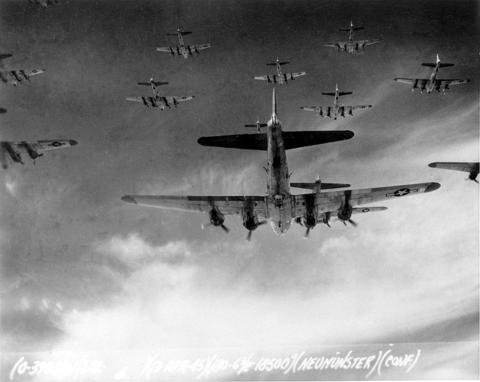2,000 Tons of Unexploded WWII Bombs Found Each Year in Germany

Though the Third Reich started it, the Allies ended it in spectacular fashion: with that "it" being WWII. As part of the comprehensive crushing of Germany required to defeat Hitler's regime the Allies dropped roughly 1.9 million tons of bombs on Germany during the war, with the vast majority of this destruction coming in the war's final year. During the entirety of the Allied Combined Bomber Offensive (a round the clock offensive led by the British Royal Air Force at night and United States Army Air Force during the day) approximately 500,000 Germans were killed.
If that were the end of things that would have been bad enough. However, and in general no type of ammunition is guaranteed to work 100% of the time. Be it a tank shell, mortar round, torpedo, bomb...you name it...there is a failure rate whereby the munition is delivered but fails to explode. Current estimates hold that of the roughly 1.9 million tons of bombs dropped by the Allies somewhere between 95,000 and just shy of 300,000 tons did not detonate on impact. These were not all failures; as this number includes bombs that were designed not to explode on impact.
For instance, during the war the USAAF dropped some 20,000 delayed action bombs on the German city of Oranienburg and its suspected atomic research facilities, pharmaceutical plant, and Heinkel aircraft factory. But delayed was not supposed to mean not ever go off. Typically the fuses were set for the bombs to detonate two to 146 hours after striking. The problem was that the soil in the region was so soft the bombs would drop too far and then hit the hard gravel shale underneath the soft soil above; causing them to bounce back but facing tip upward. And with the bomb's chemical detonator designed to work following impact with the bomb resting in any position but straight up... the end result was an armed bomb that never detonated.
Now, the vast majority of bombs were not so specialized to create havoc in the ranks of those clearing rubble and trying to get factories back on line. But the problem was that even standard impact fused weapons, having often been dropped from fast moving aircraft at great heights and thus traveling through the air at hundreds of miles an hour, well these bombs would very often bury themselves in the earth, under waterways, or punch straight through existing structures and deep under the rubble. As a result and to this day German authorities find an estimated 2,000 tons of bombs per year. A significant percentage of this find comes in the German state of Brandenburg and the German capital city of Berlin where some 631 tons of bombs are discovered each year by construction workers, road workers, farmers, or bomb disposal teams.
Needless to say this ongoing legacy of the Second World War is enormously expensive to clean up. From 1991 to 2007 bomb disposal cost 259 million Euros in Brandenburg alone. Unexploded bombs when they do go off can also unfortunately but surprisingly rarely cause injuries or even kill. In a twelve year period beginning in 1994 no one within Germany was killed by World War II ordnance until a road worker accidently cut into a bomb in 2006. Since then there have been other fatalities, and some authorities estimate it will take another twenty years to finish the bomb removal and disposal job.



Post new comment